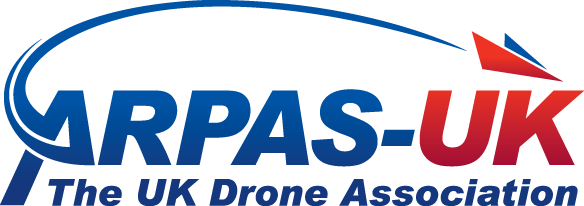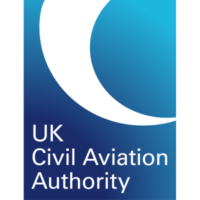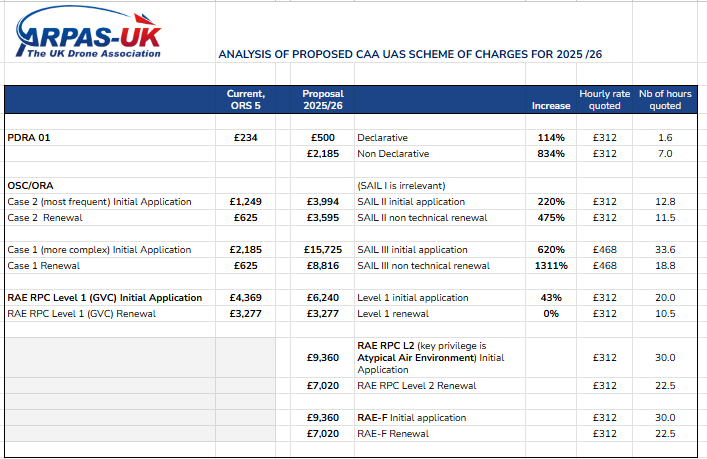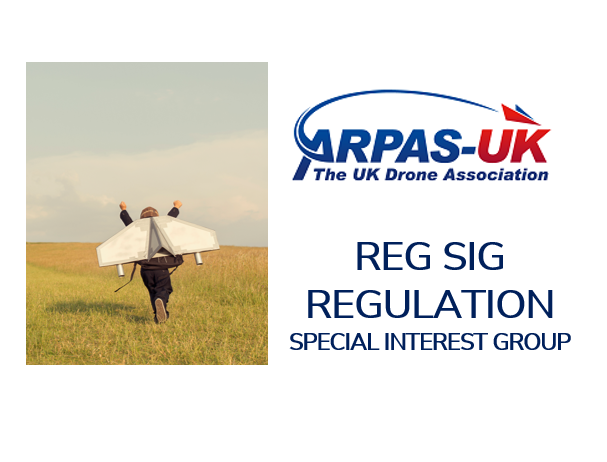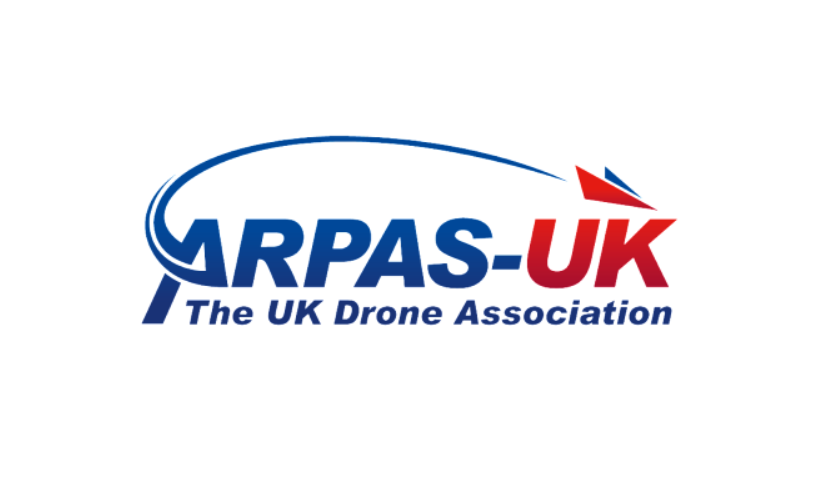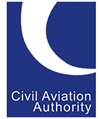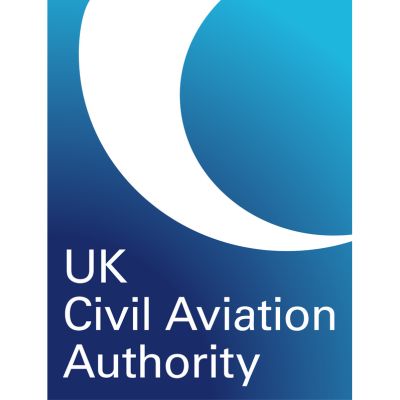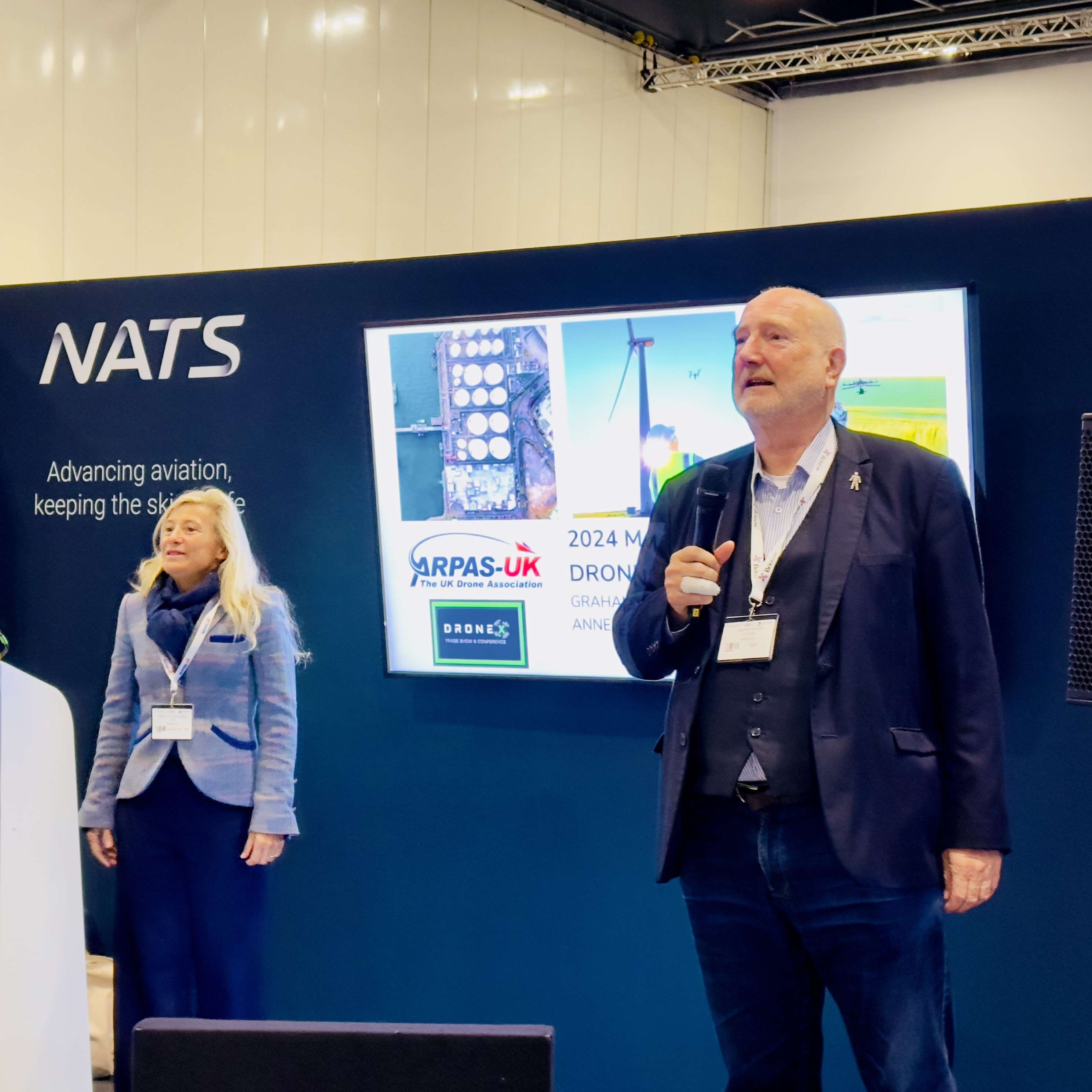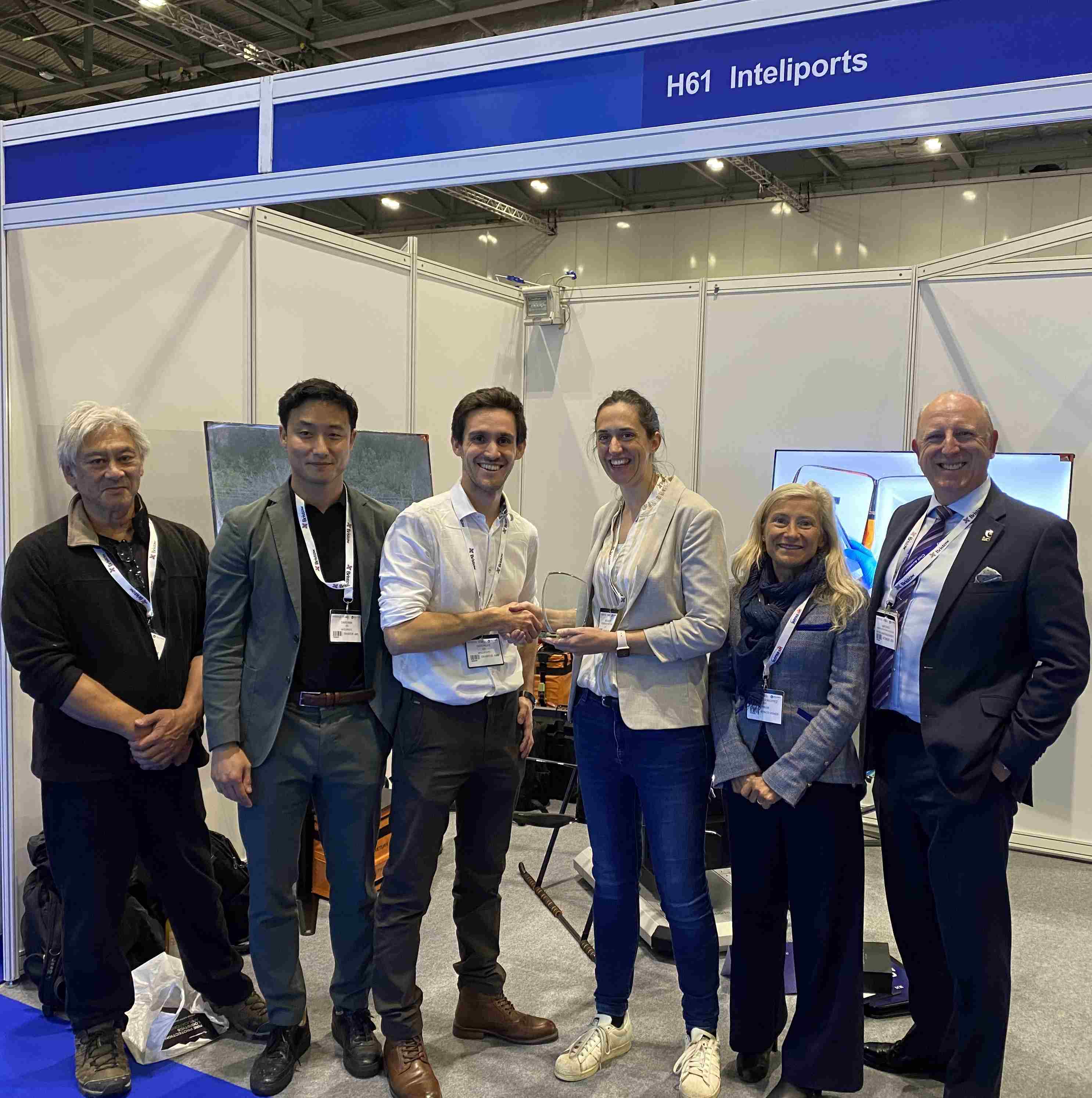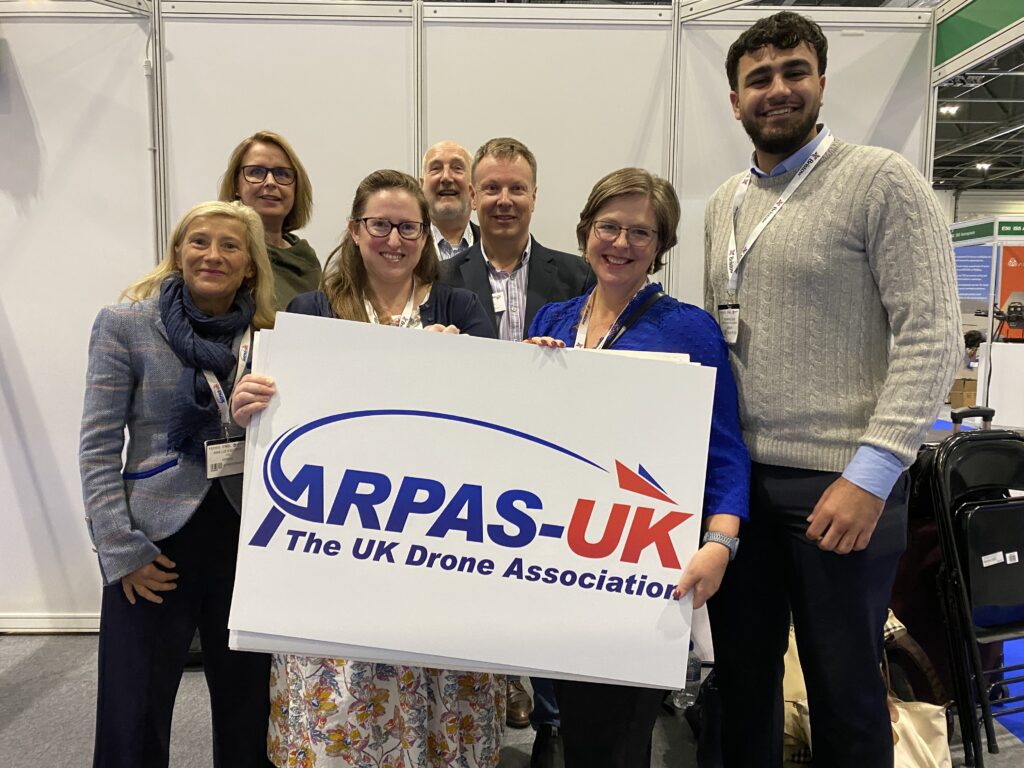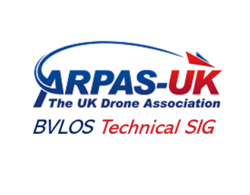The CAA launched their consultation on their proposals for revisions to the existing UK Civil Aviation Authority CAA 2025/26 Scheme of charges, due to take effect from 1 April 2025.
Our preliminary analysis indicates major/ massive increases on all charges related to UAS.
· Fee Increases for PDRA-01: We have already expressed concern informally to the CAA over the proposed increase from £234 to £500 and its potential impact on operators, particularly given the significant role PDRA-01 plays in enabling safe and efficient operations for 95% of specific category operators.
· All other fees in the Scheme of Charge: we will seek clarification on the rationale for all charges increases and exact scope of application, in order to push back and formally respond to the consultation by Jan 6.
· Transition from PDRA01 to SORA? The recent CAA PDRA survey could suggest an intent to phase out PDRAs entirely, whereas the Charging Consultation mentions exploring additional PDRAs. We have already raised that point informally, and we will seek further clarification on the long-term plans for PDRAs in our Regulations Position Paper #2, due end November, that we will share with our Members and more importantly with the CAA and DfT.
· The Need for Additional PDRAs and SORAs: ARPAS-UK has reinforced the need for more predefined risk assessments (PDRAs) or simplified, generic SORAs to reflect common operational scenarios, such as reduced separation distances, BVLOS with visual observers, increased height limits. If there is no class-marking of drones in the UK in the Open category, why not develop asap new PDRAs that would function like A1 and/or A2 for reduced distances from uninvolved people, including in urban environments?
The transition to the SORA safety methodology will create lots of changes. The objective must be efficiency and proportionality, not complexity to a point that both the drone operators’ teams and the regulator’s teams need much more time to formulate and assess applications, translating into hikes in charging fees.
We recognise the importance of a feedback loop with the CAA during this period of change and are committed to advocating for solutions that balance safety with practicality – and proportionality.
Please don’t hesitate to share any thoughts or concerns with us as we continue to represent the interests of the membership.
The Scheme of Charges consultation is accessible through the link below:
18 November 2024
